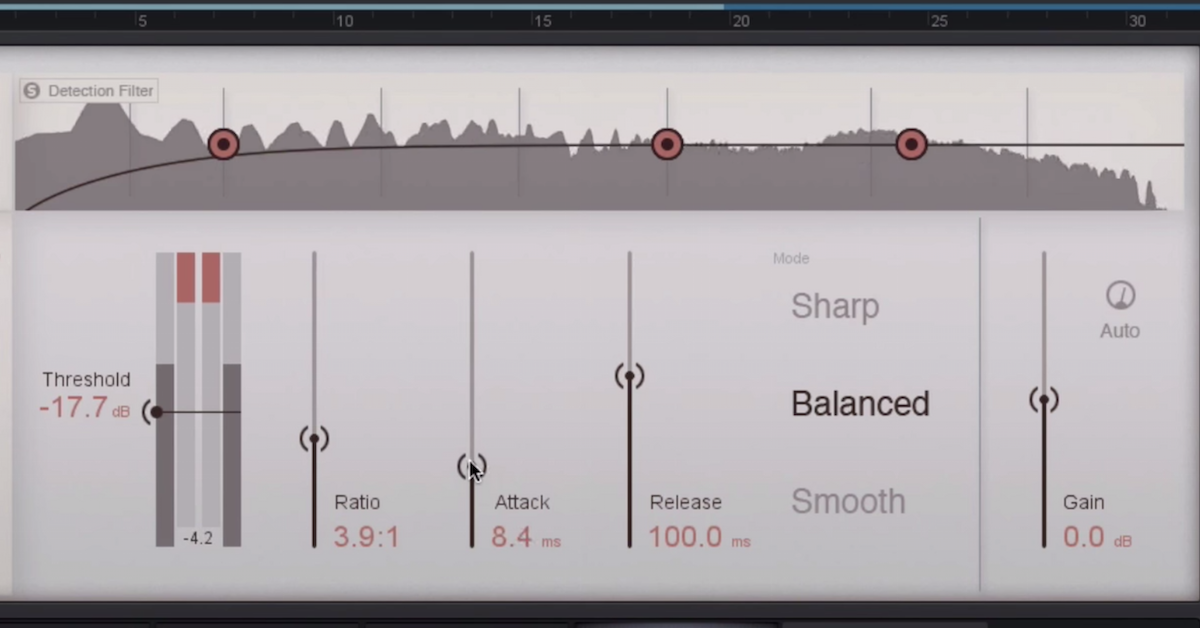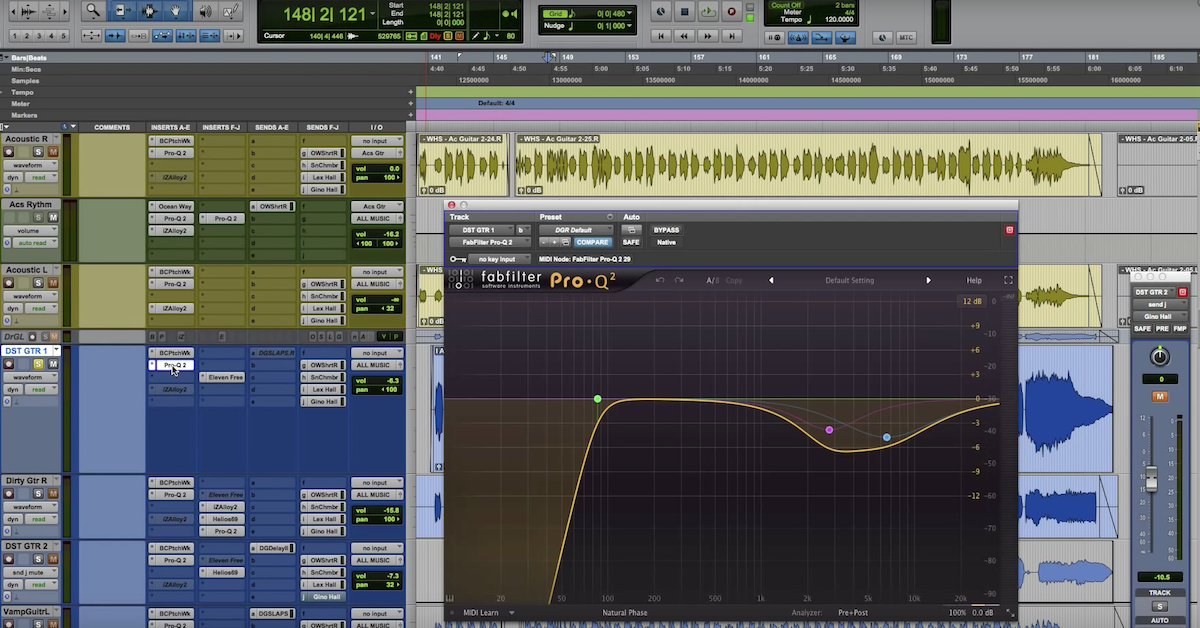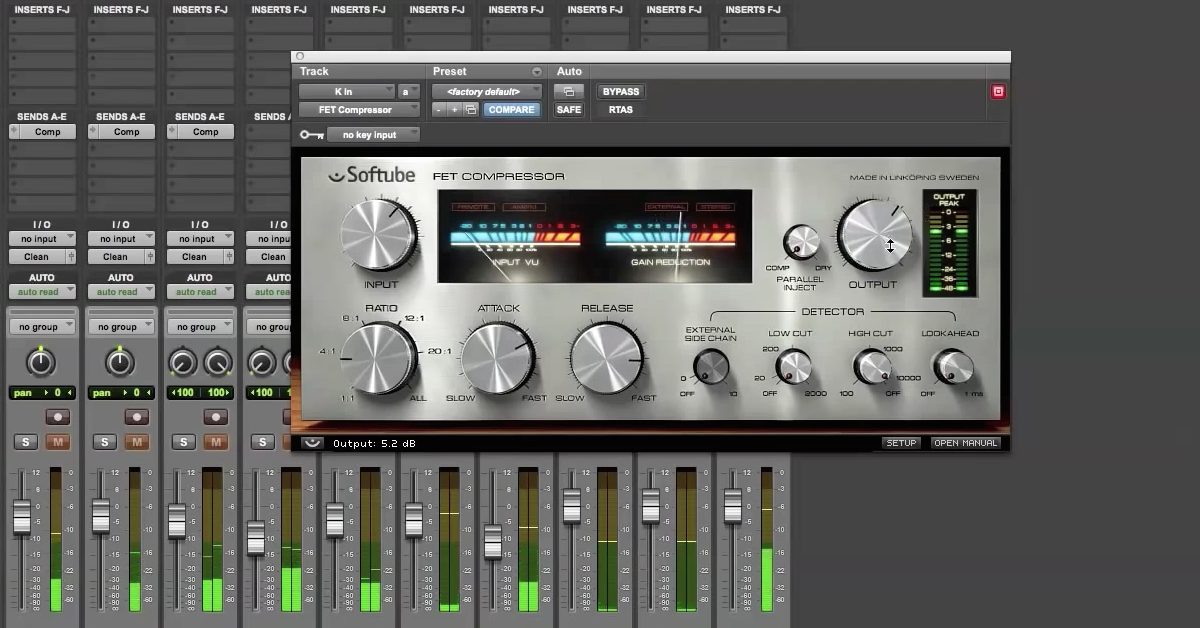How to Use C1 Compressor to De-Ess Distorted Guitar
One of the challenges or difficulties when mixing a heavily distorted electric guitar, sometimes it can sound a bit harsh or brittle. This can be when the player slides his fingers across the strings, or maybe has some fret noise that comes into the performance — or even just certain notes or harmonics that are a little bit unpleasant or a little bit too resonant.
What you could do, is try and use a conventional equalizer, find the parts in the performance that sound bad, maybe find those frequencies that specifically sound bad, and reduce them by 3 dB or 6 dB.
However, a conventional equalizer is going to pull those frequencies out across the entire performance. So if there are parts that don’t sound bad, you’re still going to be pulling out those frequencies across across the entire thing when you really just want to pull them out during the parts that sound harsh. This is where a de-esser comes into play.
Conventionally a de-esser is used for vocals. When the singer makes “S” sounds, the idea is that the compressor is going to reduce the volume of those “Sss” sounds, but let the rest of the performance go unprocessed. It’s a perfect application in this situation with heavily distorted electric guitars, because it basically acts as an adaptive equalizer that if the performance gets a little too harsh, then the compressor is going to turn those harsh parts down. However, when it’s not too harsh, it’ll basically maintain the tone that’s still there.
I’m gonna bring up a compressor that I like to use in this application which is the Waves C1. It’s kind of an all-purpose compressor. I’ll bypass it to begin with and play you back the guitar so you can see how it sounds a little bit harsh.
Right now it’s set up in its conventional compressor mode, so it’s gonna be compressing all the frequencies across the whole signal and it’s gonna be listening to — the threshold is gonna be listening to all the frequencies as well. So, by bringing the threshold down, turning the ratio up, acting like a normal compressor.
[music]
What you can do is use these different EQ modes: sidechain, where you only — you have the compressor listen to certain frequencies but still affect all the frequencies in there. Or this split mode, more importantly is the one I’m going to use here.
What this does, is just the frequencies that you select for the compressor, it’s going to listen to, but then at the same time it’s only going to process these frequencies that you select as well. So I’m gonna switch over here to the bandpass filter, and I’m gonna use this and only these frequencies that I’m gonna sweep through and find the ones that sound harsh, and then the compressor is only going to be acting on those harsh frequencies.
Basically when it gets too harsh, it’s gonna turn those frequencies down. but when it’s not too harsh, it’s just gonna let them pass through. So I’m gonna switch over and monitor the side-chain while I find the ones I don’t like.
[music]
Use the Q. Now it’s just a matter of playing around with the ratio. I like to use a fast attack, fast release so it’s pretty response. Then play around with the threshold and the ratio until you find something that’s good. Again you want it to be a subtle effect. You don’t want it to be too much. But then you basically can use it as an equalizer to pull down certain frequencies that sound bad and do it to certain amounts until you find basically a happy medium.
[music]
So this is a bit too much. And we need some makeup gain. Here I’m pulling out a lot of the higher frequencies. This is a little bit over-dramatic, but I can show you how the effect works.
It’s just a matter of picking the right threshold and ratio to go along with your guitar performance so that you reduce the parts that sound harsh.





